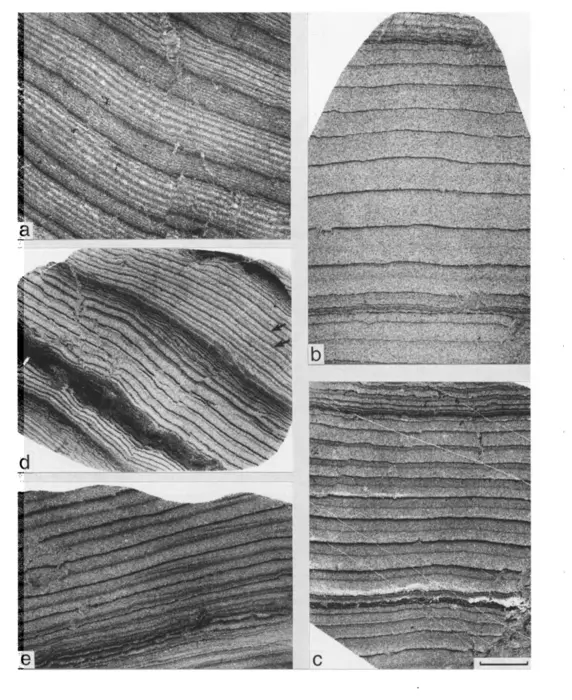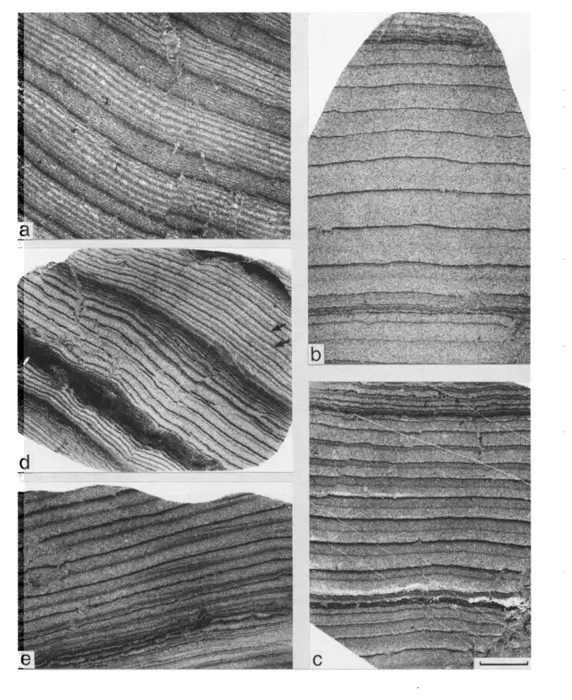A team of astrophysicists at the University of Toronto (U of T) has revealed how the slow and steady lengthening of Earth’s day caused by the tidal pull of the moon was halted for over a billion years.

Credit: G.E. Williams
A team of astrophysicists at the University of Toronto (U of T) has revealed how the slow and steady lengthening of Earth’s day caused by the tidal pull of the moon was halted for over a billion years.
They show that from approximately two billion years ago until 600 million years ago, an atmospheric tide driven by the sun countered the effect of the moon, keeping Earth’s rotational rate steady and the length of day at a constant 19.5 hours.
Without this billion-year pause in the slowing of our planet’s rotation, our current 24-hour day would stretch to over 60 hours.
The study describing the result, ‘Why the day is 24 hours long; the history of Earth’s atmospheric thermal tide, composition, and mean temperature,’ was published today in the journal Science Advances. Drawing on geological evidence and using atmospheric research tools, the scientists show that the tidal stalemate between the sun and moon resulted from the incidental but enormously consequential link between the atmosphere’s temperature and Earth’s rotational rate.
The paper’s authors include Norman Murray, a theoretical astrophysicist with U of T’s Canadian Institute for Theoretical Astrophysics (CITA); graduate student Hanbo Wu, CITA and Department of Physics, U of T; Kristen Menou, David A. Dunlap Department of Astronomy & Astrophysics and Department of Physical & Environmental Sciences, University of Toronto Scarborough; Jeremy Laconte, Laboratoire d’astrophysique de Bordeaux and and a former CITA postdoctoral fellow; and Christopher Lee, Department of Physics, U of T.
When the moon first formed some 4.5 billion years ago, the day was less than 10 hours long. But since then, the moon’s gravitational pull on the Earth has been slowing our planet’s rotation, resulting in an increasingly longer day. Today, it continues to lengthen at a rate of some 1.7 milliseconds every century.
The moon slows the planet’s rotation by pulling on Earth’s oceans, creating tidal bulges on opposite sides of the planet that we experience as high and low tides. The gravitational pull of the moon on those bulges, plus the friction between the tides and the ocean floor, acts like a brake on our spinning planet.
“Sunlight also produces an atmospheric tide with the same type of bulges,” says Murray. “The sun’s gravity pulls on these atmospheric bulges, producing a torque on the Earth. But instead of slowing down Earth’s rotation like the moon, it speeds it up.”
For most of Earth’s geological history, the lunar tides have overpowered the solar tides by about a factor of ten; hence, the Earth’s slowing rotational speed and lengthening days.
But some two billion years ago, the atmospheric bulges were larger because the atmosphere was warmer and because its natural resonance — the frequency at which waves move through it — matched the length of day.
The atmosphere, like a bell, resonates at a frequency determined by various factors, including temperature. In other words, waves — like those generated by the enormous eruption of the volcano Krakatoa in Indonesia in 1883 — travel through it at a velocity determined by its temperature. The same principle explains why a bell always produces the same note if its temperature is constant.
Throughout most of Earth’s history that atmospheric resonance has been out of sync with the planet’s rotational rate. Today, each of the two atmospheric “high tides” take 22.8 hours to travel around the world; because that resonance and Earth’s 24-hour rotational period are out of sync, the atmospheric tide is relatively small.
But during the billion-year period under study, the atmosphere was warmer and resonated with a period of about 10 hours. Also, at the advent of that epoch, Earth’s rotation, slowed by the moon, reached 20 hours.
When the atmospheric resonance and length of day became even factors — ten and 20 — the atmospheric tide was reinforced, the bulges became larger and the sun’s tidal pull became strong enough to counter the lunar tide.
“It’s like pushing a child on a swing,” says Murray. “If your push and the period of the swing are out of sync, it’s not going to go very high. But, if they’re in sync and you’re pushing just as the swing stops at one end of its travel, the push will add to the momentum of the swing and it will go further and higher. That’s what happened with the atmospheric resonance and tide.”
Along with geological evidence, Murray and his colleagues achieved their result using global atmospheric circulation models (GCMs) to predict the atmosphere’s temperature during this period. The GCMs are the same models used by climatologists to study global warming. According to Murray, the fact they worked so well in the team’s research is a timely lesson.
“I’ve talked to people who are climate change skeptics who don’t believe in the global circulation models that are telling us we’re in a climate crisis,” says Murray. “And I tell them: We used these global circulation models in our research, and they got it right. They work.”
Despite its remoteness in geological history, the result adds additional perspective to the climate crisis. Because the atmospheric resonance changes with temperature, Murray points out that our current warming atmosphere could have consequences in this tidal imbalance.
“As we increase Earth’s temperature with global warming, we’re also making the resonant frequency move higher — we’re moving our atmosphere farther away from resonance. As a result, there’s less torque from the sun and therefore, the length the day is going to get longer, sooner than it would otherwise.”
-30-
Journal
Science Advances
DOI
10.1126/sciadv.add2499
Method of Research
Computational simulation/modeling
Subject of Research
Not applicable
Article Title
Why the day is 24 hours long; the history of Earth’s atmospheric thermal tide, composition, and mean temperature
Article Publication Date
5-Jul-2023
COI Statement
The authors declare that they have no competing interests





